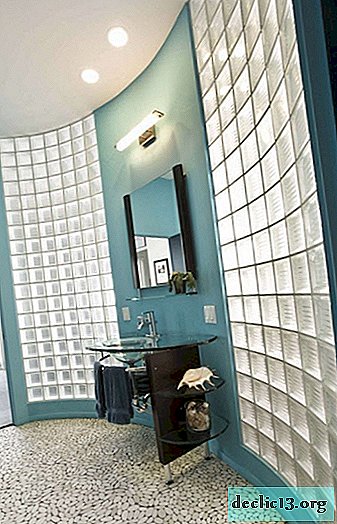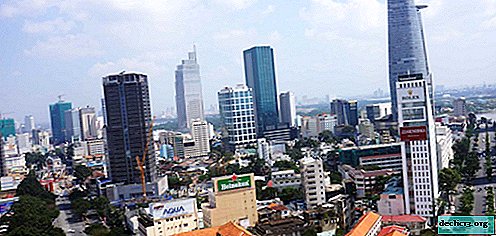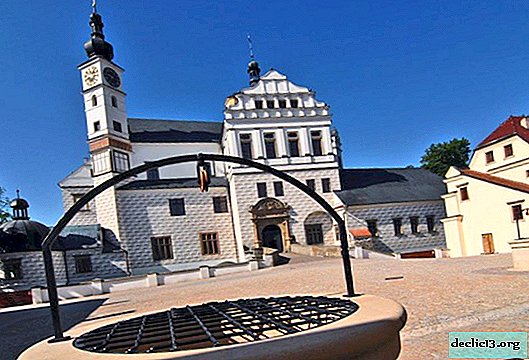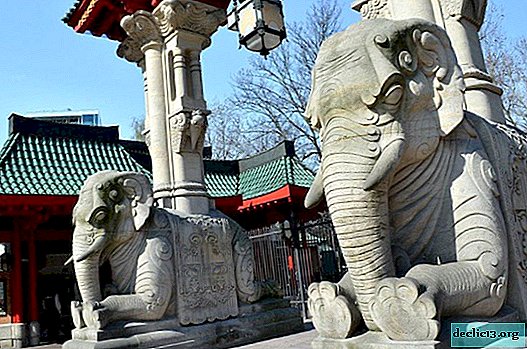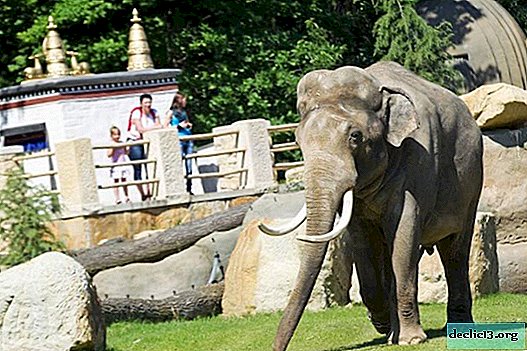What to see in Dublin - TOP 13 attractions
The colorful Dublin captivates tourists with the unique fun and independent atmosphere of Ireland and the indescribable proud spirit that has been forming for centuries. And Dublin gives attractions that many European capitals can envy.
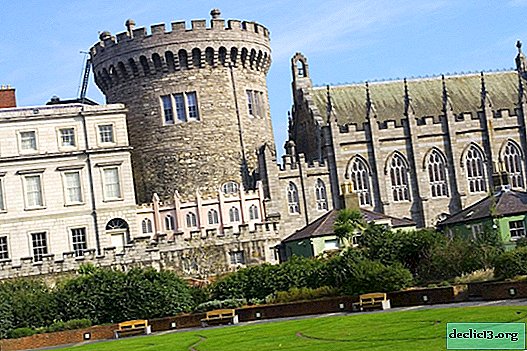
What to see in Dublin - getting ready for the journey
Of course, in the capital of Ireland there are so many interesting places that it is impossible to visit them all in a few days. We made a selection of the most fascinating ones located not far from each other, for which two days are enough. Going on a trip, take a map of Dublin's attractions with a photo and description to make a comfortable route and have time to see as much as possible interesting.
Kilmanham - Irish Prison
What to see in Dublin in 2 days? Start with an incredibly atmospheric place - a former prison. Today a museum is open here. Between the 18th and the beginning of the 20th centuries, the British authorities kept in the cells of the fighters for the independence of Ireland. Executions were carried out here, it is not surprising that the atmosphere here is rather gloomy and terrible.

The building was built at the end of the 18th century and was called the "New Prison". Prisoners were executed in front, but executions became a rare occurrence from the mid-19th century. Later, a separate execution chamber was built in the prison.
Interesting fact! Among the prisoners there were even seven-year-old children. The area of each chamber is 28 square meters. m. they were common and contained men, women and children.

By the way, getting into an Irish prison was very simple - for the slightest offense a person was sent to a cell. Poor people intentionally committed some crime to end up in prison, where they fed for free. Prisoners from wealthy families could pay for a deluxe cell with a fireplace and additional amenities.
The prison is a real labyrinth in which it is easy to get lost, so during the tour do not lag behind the guide. In order to dispel a little oppressive experience after a visit to the prison cells, relax in Phoenix Park, located nearby. Deer are found here, who are happy to eat several fresh carrots.

Practical information:
- address: Inchicore Road, Kilmainham, Dublin 8;
- work schedule must be specified on the official website;
- Admission fee for adults is 8 €, children over 12 years old are allowed:
- Website: kilmainhamgaolmuseum.ie
Park St. Stephens Green or St. Stephen
3.5 km long city park is located in the center of Dublin. Once representatives of the local aristocracy walked here and only at the end of the 19th century the park was opened for everyone. Guinness, the founder of the famous brewery, contributed a lot to this.

Interesting fact! Queen Victoria once proposed to name the park in honor of her deceased husband. However, the townspeople categorically refused to rename the attraction.
Strolling in the park, be sure to look at the decorative lake where the birds live. A very interesting garden for the visually impaired. Children have fun at the playground. Concerts are held here in the summer, but so many people come that there are not enough benches for everyone. At lunchtime, the park has many office workers who come to eat and relax.

The main entrance to the park through the Arch of shooters, which is similar to the Roman arch of Titus. On the territory of the attraction, wide, comfortable paths are laid, sculptures are installed on the sides. Due to the large amount of greenery, the locals call the park an oasis in the stone, urban jungle.

Practical information:
- address: St Stephen's Green, Dublin 2, Ireland;
- the park has snack bars, cafes, souvenir shops;
- you can relax on the grass, but in this case you will be in full view of all people, it is better to spend time actively - play badminton or go rollerblading.
Trinity College and the Book of Kells
The educational institution was founded in the late 16th century by Elizabeth I. The main entrance is decorated with sculptures of college graduates. Many interesting sights are stored here:

- ancient harp;
- unique book of Kells dating back to 800 BC

The book is a collection of four gospels. This is an amazing collection of puzzles, preserved for one thousand years. Scientists today can not figure out what colors were used for decoration, since they retained their rich color. Another mystery is how they managed to write miniatures without using a magnifying glass. The history of the book is rich - it has been repeatedly lost, stored in different places and restored. You can watch the unique edition in the library of Trinity College.

Practical information:
- address: College Green, Dublin 2, Ireland;
- the work schedule depends on the season of the year, so see the hours of tourist reception on the official website:
- the cost of visiting: for adults - 14 €, for students - 11 €, for pensioners - 13 €;
- website: www.tcd.ie.
Guinness Museum
Guinness is the most popular beer brand in the world. The history of this famous brand begins in the middle of the 18th century, when Arthur Guinness inherited 200 pounds and bought the entire brewery. For 40 years, Guinness became a very wealthy man and handed the business over to his sons. It was they who turned the family brewery into a global, successful brand, known throughout the world.

Interesting to know! The attraction can be found in the production room, which today is not used for its intended purpose.
Many exhibits can be seen on the seventh floor. Here is the button that starts the release of a new batch of drink.

Interesting fact! The museum complex has the Gravity Pub, where you can exchange a ticket for a glass of foamy drink. By the way - the pub is the best viewing platform in the city.

Practical information:
- address: St. James's Gate Brewery, Dublin 8;
- work schedule: daily from 9-30 to 17-00, in the summer months - until 19-00;
- ticket price: 18.50 €;
- Website: www.guinness-storehouse.com.
Temple Bar
It would be an unforgivable mistake to come to Dublin and not visit the famous Temple Bar area. This is one of the oldest areas of the city, where a large number of cafes, pubs and shops are concentrated. Life on the streets of this district does not cease even at night, people are constantly walking here, looking into endless entertainment venues.

Interesting fact! The words bar in the name of the area does not mean a pub. The fact is that previously Temple's possessions were located on the banks of the river, and in translation from the Irish the word "barr" means a steep bank.
Local residents and tourists note that the district, despite an active life and a large crowd of people, is quite calm in terms of thefts and other crimes. If you decide to see the sights at night, you are not in danger of anything except a mass of positive impressions.
What else to see in the Temple Pub area:
- oldest pub, operating since the 12th century;
- the oldest theater building;
- Victorian-style theater
- the smallest theater in the country;
- popular cultural center.
EPIC - Museum of Irish Expatriation
The attraction details the people who have left Ireland in different years in search of a better life. The exposition covers a period of 1500 years. This is the only fully digital museum in the world where you can not only see exhibits, but also relive every story with the narrator. Modern galleries have touch screens, audio and video systems. Fascinating stories are told by animated characters from the past.


Practical information:
- address: CHQ, Custom House Quay, Dublin 1 (10-minute walk from O'Connell Bridge);
- work schedule: daily from 10-00 to 18-45, the last entrance at 17-00;
- ticket price: adult - 14 €, children from 6 to 15 years old - 7 €, for children under 5 years old admission is free;
- Dublin Pass owners can visit a landmark in Dublin for free;
- Website: epicchq.com.
Irish Whiskey Museum
Located in front of Trinity College, in the center of Dublin. This is the second museum dedicated to the national drink. Founded in 2014 and quickly became one of the most visited and popular tourist destinations. This is a museum complex that consists of three floors, a cafe, a souvenir shop and a McDonnell's bar.

The pride of the museum is the largest collection of whiskey, here you can see unique varieties of the drink. Some exhibits are interactive and introduce visitors to the whiskey production process.
Interesting fact! Almost 2 million euros were invested in the creation of the project.

Practical information:
- address: 119 Grafton Street / 37, College Green, Dublin 2;
- work schedule: from 10-00 to 18-00, the first tour starts at 10-30;
- ticket price: adult - 18 €, for students - 16 €, for pensioners - 16 €;
- Website: www.irishwhiskeymuseum.ie/.
Glasnevin cemetery
To see the attraction, you need to go to the north of Dublin. The cemetery is popular in that it is the first Catholic necropolis, which allowed to exist separately from the Protestant. Today it is a unique museum, burial in the cemetery is no longer carried out. Many well-known politicians, active fighters for independence, soldiers, poets and writers are resting on Glasnevin.

There is a cemetery since 1832, since then its area has increased significantly, and it occupies 120 acres. The total number of graves already exceeds one million. Along the perimeter, the territory is fenced with a metal fence with observation towers.
Interesting fact! The main attraction of the cemetery is tombstones made in the form of Celtic crosses. Here you can see the crypts, amazing in their scope and design.

There is a museum in the cemetery located in a glass building, tourists are told about the history of the creation of Glasnevin. With special trepidation, visitors come to see the Angel corner - a place where more than 50 thousand newborns are buried. This place is shrouded in secrets and mysticism.
The cemetery is located ten minutes drive from the central part of Dublin. Admission to its territory is free.
Jameson Distillery
If you arrive in Dublin without visiting the Jameson Distillery Museum, your journey will be in vain. The attraction is considered one of the most significant and revered not only in the capital, but throughout Ireland. It is here that the world-famous whiskey is produced. Given that the tasting of the drink is included in the visit program, a tour of the museum promises to be not only fascinating, but also fun.

Interesting fact! Every tourist who visits the distillery receives a whiskey Taster certificate.

There is a landmark in the historical part of the capital, where you can see many interesting places. As for the distillery, a fascinating journey begins with the remarkable facade of the building, which has been completely preserved since the 18th century. Already in the lobby of the museum, tourists feel the unique atmosphere of the production of the national Irish drink. The duration of the tour is one hour - during this time, guests can watch and learn a lot of interesting things about whiskey and its production. The exhibits featured distillery equipment - distillation cubes, old distillers, containers where the whiskey is aged for the required period of time, as well as branded bottles of the brand.
From spring to autumn, every Thursday and Saturday, the museum hosts theme parties flavored with aged Irish whiskey and folk music.

Practical information:
- address: Dublin, Smithfield, Bow Street;
- tourist reception schedule: every day from 10-00 to 17-15;
- excursions are carried out with a frequency of one hour;
- theme parties begin at 19-30 and end at 23-30;
- Website: www.jamesonwhiskey.com
Dublin Castle
The attraction was built by order of the monarch John Landless. In the 13th century, this building was the most modern in Ireland. Conferences, important diplomatic meetings are held here today.

Practical information:
- address: 16 Castle St, Jamestown, Dublin 2;
- work schedule: from 10-00 to 16-45 (on weekends until 14-00);
- ticket price: for adults 7 €, for students and seniors - 6 €, for children from 12 to 17 years old - 3 € (the ticket gives the right to visit the Arts Center, Birmingham Tower and the Holy Trinity Church);
- there is a cafe in the castle dungeon where you can eat;
- Website: www.dublincastle.ie.
More information about the castle is on this page.
National Museum of Ireland

The list of attractions in Dublin and its environs includes a unique museum complex, founded in the late 19th century. Today, this exhibition space is unlikely to have analogues around the world. The capital's attraction consists of four branches:
- the first is dedicated to history and art;
- the second is natural history;
- the third is archeology;
- the fourth to agriculture.
The first three branches are in Dublin, and the fourth is in the village of Tarlow (Mayo County).

The first branch is located in the building where the army garrison used to be. Museum exhibits moved here only in 1997. Here you can see local household items, jewelry, religious exhibits. In this part of the museum, the Irish army is presented in detail.
Address: Benburb Street, Dublin 7, walking distance from the center of Dublin is easy to reach in 30 minutes or take bus number 1474.

The second branch was founded in the mid-19th century, since then its collection has not changed much. For this reason, it is called the museum of the museum. Among the exhibits are rare representatives of the local fauna and geological collection. The attraction is located on Merrion Street, not far from St. Stephen's Park.
In the Museum of Archeology you can see a unique collection of all cultural monuments found in Ireland - jewelry, tools, household items. The third branch is located next to the Natural History Museum.

The fourth branch, located outside of Dublin, is a modern museum space that tells about the agriculture of Ireland in the 18th century. You can get here by train, bus or car.
Practical information:
- all four branches work six days a week, Monday is a day off;
- time of visits: from 10-00 to 17-00, on Sunday - from 14-00 to 17-00;
- admission to any branch of the museum complex is free;
- Website: www.nationalprintmuseum.ie.
Dublin Zoo
There is something to see for both adults and kids. Since 1999, a zoo dedicated to pets and birds has been working in the zoo. Goats, sheep, canaries, guinea pigs, rabbits and ponies are represented here. Zones dedicated to South American animals, cats, African inhabitants and reptiles are also open. For all animals, conditions are created that are as close as possible to natural ones.

Interesting fact! A lion grew up in the Dublin zoo, which later became a Hollywood star - it is precisely his millions of viewers who see the screensaver of the film company Metro-Goldwin-Mayer.

To visit attractions, it is recommended to plan at least five hours. It is best to visit the zoo in the summer, because in the cold season, many animals hide and are invisible. You can come here all day - to see animals, eat in a cafe, visit a souvenir shop and just take a walk in the Phoenix city park, where the attraction is located.
Practical information:
- address: Phoenix Park;
- the work schedule depends on the season, so read the exact information on the official website;
- ticket price: adult - 18 €, children from 3 to 16 years old - 13.20 €, for children under three years old admission is free;
- book tickets on the zoo website - in this case they are cheaper;
- Website: dublinzoo.ie.
St. Patrick's Cathedral
The largest temple in Ireland, dating from the 12th century.Since that time, a whole architectural complex has been built near the cathedral along with the archbishop's palace. On its territory you can see many attractions. The most memorable is the monument to Jonathan Swift. Many know him from Gulliver’s fascinating adventures, but few know that he was the rector of the cathedral. Be sure to stroll through the garden adjacent to the cathedral.

The temple is one of the few structures preserved from the Middle Ages. Today, this is the lava cathedral not only of Dublin, but of the whole of Ireland. Tourists note the architecture uncharacteristic for the capital - the cathedral was built in the Neo-Gothic style, and the decoration dates back to the Victorian era. The temple attracts with huge windows, elaborate carvings on wooden furniture, high freedoms characteristic of the Gothic form, and organ.
Interesting fact! During the reign of various monarchs, the temple flourished and fell into decay. The temple complex was finally restored in the middle of the 16th century; knighting ceremonies were held here.
Every November, the cathedral hosts celebrations in honor of Irish Memorial Day.

Before visiting the temple, carefully study the schedule on the official website. Entrance during the service is prohibited, and if you do not arrive at the beginning of the service, you will have to pay 7 € for adults and 6 € for students.
Practical information:
- address: Saint Patrick's Cathedral, Saint Patrick's Close, Dublin 8;
- The schedule of excursions must be viewed on the official website;
- Website: www.stpatrickscathedral.ie.
Are you waiting for a trip to Dublin, sights and acquaintance with the history of Ireland? Bring comfortable shoes and, of course, a camera. After all, you have to go an impressive distance and take many colorful pictures.






